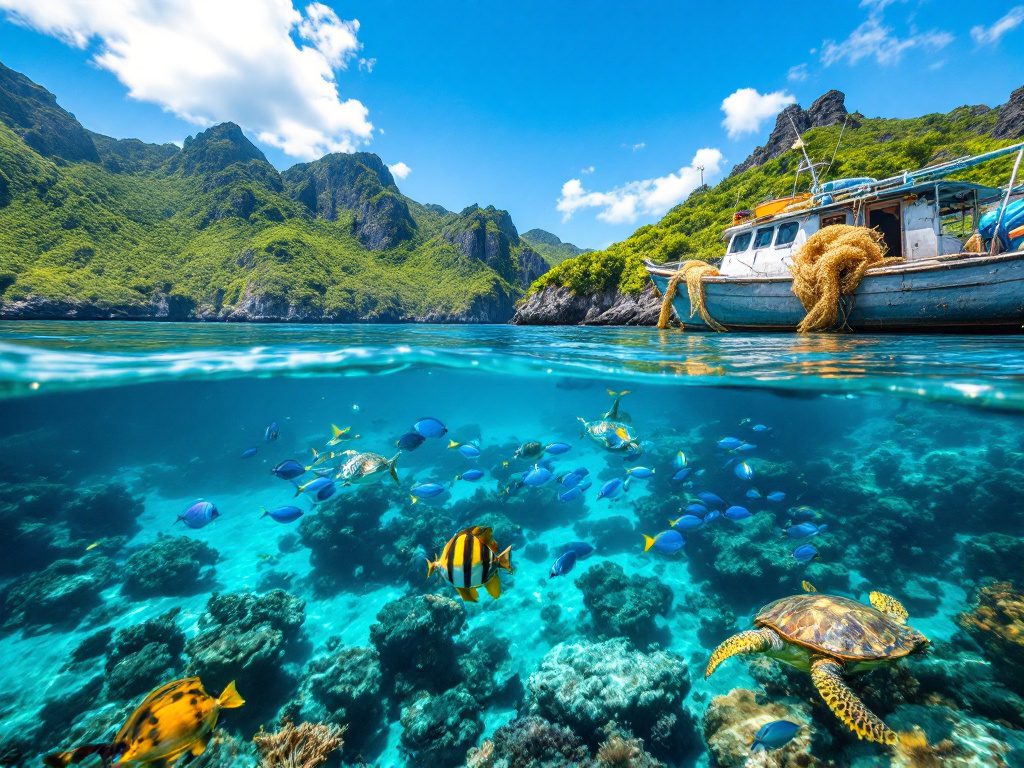Reversing Course: Sacrificing Conservation for Industry
Picture a stretch of crystal-blue Pacific waters—nearly half a million square miles teeming with vulnerable coral reefs, ancient migratory routes, and the last refuges of imperiled species. For decades, areas like the Pacific Islands Heritage Marine National Monument have served not just as ecological sanctuaries, but as living testaments to American leadership in global marine conservation. That changed with the sweep of a presidential pen: President Donald Trump has opened these protected waters to commercial fishing, undoing protections forged by his predecessors and reigniting a fierce debate about how the U.S. should balance economic interests against environmental stewardship.
This monument—established by President George W. Bush in 2009 and expanded by President Barack Obama in 2014—encompasses some of the most pristine and biodiverse marine habitats on the planet. Within its boundaries lie seven national wildlife refuges: Howland, Baker, and Jarvis Islands, Johnston, Wake and Palmyra Atolls, and Kingman Reef. These remote outposts harbor endangered sea turtles, nesting seabirds, and deep-sea coral wonders unseen by most Americans, but vital to the health of our oceans.
Trump’s executive order reverses the ban on commercial fishing in these waters, claiming it will “restore economic opportunities” for U.S.-flagged tuna fleets, particularly those supporting the economy of American Samoa. Commerce Secretary Wilbur Ross cheered the decision as a move to eliminate what he called unnecessary overregulation, despite the consensus among marine scientists that protected areas actually boost fish populations in surrounding, fished waters, not the reverse. Excessive exploitation runs counter to the sustainable practices many Americans have come to expect of their government.
Conservation at the Crossroads: Who Really Benefits?
Critics argue this order is a textbook case of short-term economic thinking over sound environmental policy. David Henkin, attorney at Earthjustice, sees it as an attempt to undermine decades of bipartisan conservation effort in favor of industry interests. “The Pacific Islands Heritage Marine National Monument wasn’t created on a whim—it reflects decades of science and an understanding that once biodiversity is lost, there is no getting it back,” Henkin said in a public statement.
What’s at stake? According to a 2018 Pew Charitable Trusts review, no-take marine preserves consistently result in higher fish stocks outside their boundaries. This spill-over effect directly supports commercial fishing in surrounding areas, creating a win-win: healthier oceans and sustainable catches. A closer look reveals that returns from responsible marine conservation often outpace the short-lived gains of exploitation. Jane Lubchenco, former NOAA Administrator and a leading marine ecologist, warns that “fishing the last great places doesn’t create more fish—it simply destroys the nursery.”
The decision also puts indigenous cultural heritage at risk. Pacific communities hold deep connections to these waters, which support traditional practices, spiritual beliefs, and, for many, the very identity of their people. Systematically sacrificing these places for fleeting industry gain again raises the question: Whose interests are preserved, and who gets left behind?
“Turning protected marine sanctuaries into commercial fishing grounds offers fleeting profits for a few, but risks lasting damage to ecosystems and communities that depend on healthy oceans.” — Pew Charitable Trusts, 2018 Review
Beyond that, there’s mounting anxiety over how these distant waters will be properly overseen. NOAA Fisheries—the agency tasked with enforcement—is facing possible downsizing and a merger with the U.S. Fish and Wildlife Service, according to leaked memos from the White House Office of Management and Budget. Effective oversight was already challenging in such remote oceanic regions; slashing resources could open the door to illegal, unmonitored, and potentially destructive fishing practices.
The Slippery Slope of Deregulation
Trump’s order does not stop with one monument. The administration is pushing for a sweeping review of all U.S. marine national monuments, including the vast Papahānaumokuākea Marine National Monument near Hawaii—the largest in the world. The move signals an emboldened agenda that questions the very premise of environmental protections in favor of narrow economic arguments, echoing a broader deregulatory push seen throughout the Trump presidency.
History has not looked kindly on such disregard for environmental checks. The opening of Alaska’s Tongass National Forest to logging interests in the 1980s led to decades of habitat destruction, loss of biodiversity, and costly attempts at restoration—reminders that short-term profits often come at the expense of irreplaceable natural capital.
Why does this matter for the rest of us? Dismantling marine protections in favor of commercial exploitation doesn’t just risk the health of distant reefs and atolls. Healthy oceans regulate our climate, provide food security worldwide, and drive billions in tourism and shoreline protection. The precedent set here could ripple out to other conservation victories, steadily eroding the gains made through bipartisan cooperation and scientific consensus.
John Podesta, former counselor to President Obama, summed up the broader stakes: “If we chip away at protections for our last wild places, we become a nation that trades its birthright for momentary advantage. Future generations deserve better.”
The core question remains: Will leaders act as stewards for future generations or as auctioneers for our natural heritage? This is more than a regulatory rollback—it’s a test of our national character and our commitment to the planet we share.

